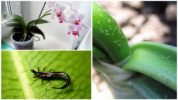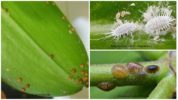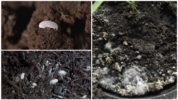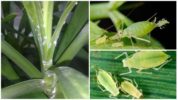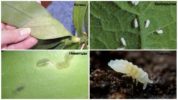- Thrips on an orchid
- Pests of Phalaenopsis Orchids
- Orchid Rootworm
- White aphid on an orchid
- Orchid Pests
Specialists attribute beautiful orchids to rather capricious decorative flowers, which are prone to diseases and pests. To maintain plant health, you need to know exactly what the pests of Phalaenopsis orchids look like. Proper identification will help to carry out the necessary treatment for the Phalaenopsis orchid.
Causes of Pests
The most harmful insects and bugs that start on the flower itself or in the ground next to it are thrips, ticks, scale insects and worms, but there are other, less well-known.
Pest bugs attack plants in several ways:
- parasites can be blown through the window with dust;
- when buying an infected orchid with a flower pot, it is therefore important to carefully inspect each purchased specimen, including the sinuses and lower parts of leaf plates, soil;
- pests were originally in the soil if it was taken from a nearby flower garden, or the substrate purchased was not from a company store;
- bugs were able to move from neighboring plants, if the room has a large number of flowers, then the risk of infection increases sharply.
Description and photos of orchid pests will help to accurately determine the types of bugs, then to deal with their treatment.
Thrips
These small insects up to 2.5 mm in size look like thin little bugs or “sticks” with wings. Body color - brown or black. They move quickly enough and after falling into the pot instantly burrow into the soil.
Signs of a thrips settlement:
- black dots with a silver film appear on the sheet plates;
- at night, black bugs on the orchid are easy to detect by turning on the light unexpectedly, just at that time they crawl out to eat and lay eggs.
For flowers, thrips are dangerous in the following:
- lay eggs on the inside of the leaves;
- the larvae emerging from them begin to feed on the green mass, due to which the leaves become spotty and brown in color, then begin to fall off;
- adult bugs parasitize on the roots and the flowers themselves, leaving their tracks.
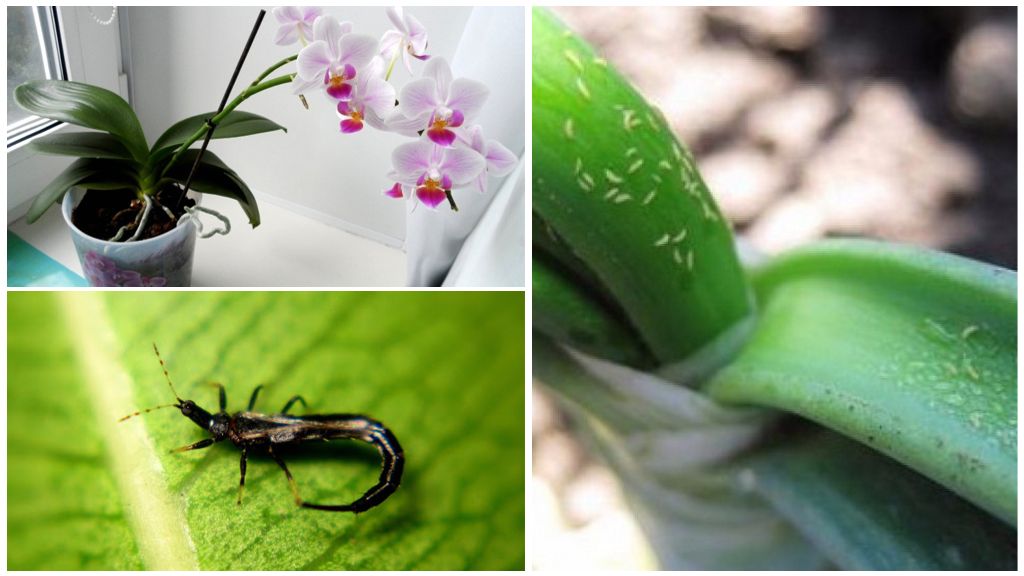
To get rid of insects in orchids, it is necessary to remove all damaged parts, wipe the rest. The orchid should be treated with any insecticidal solution (Actara, Fitoverm or Actellik) 3 times with an interval of 10 days.
On a note!
In the future, you need to inspect the flower every 5-6 days, for preventive purposes - regularly wipe the leaf plates with clean warm water.
Scaffold and false scaffold
These parasites are distinguished by a variety of species (about 1300), shapes and colors. They look like small bugs in an orchid the size of a match head, a body - round, oval or elongated, color - from white to brown and red. Shields differ from their counterparts, false shields, only in the absence of a shell. The latter prefer to settle on flowers with dense leaves, which include the Phalaenopsis, Cattleya, etc.
These pest bugs parasitize on the back of leaf blades, branches and trunks and feed on plant juice.In the places of their settlements and on sticky secretions a soot fungus settles. Its danger consists in blocking the pores of the plant, which are necessary for respiration. Due to lack of air, the flower begins to fade, its development is inhibited.
The first sign of the appearance of scale insects is sticky spots on the green parts of the plant. From the hatched eggs that lay the bugs in the form of "plaques", the smallest gluttonous larvae appear. They creep into all parts of the plant in search of food, sticking to the leaves and stems. As a result of their activity, the flower begins to turn yellow, and the green sprouts fall off.
To combat scabies, systemic action insecticides are used, which water the soil. Absorbing with moisture, the poison penetrates into all green parts. Pests, eating such poisonous juice, die. Treatment should be repeated a second time, after 4 weeks.
Important!
All diseased leaves should also be treated, and growths in the form of "plaques" removed with a toothbrush.
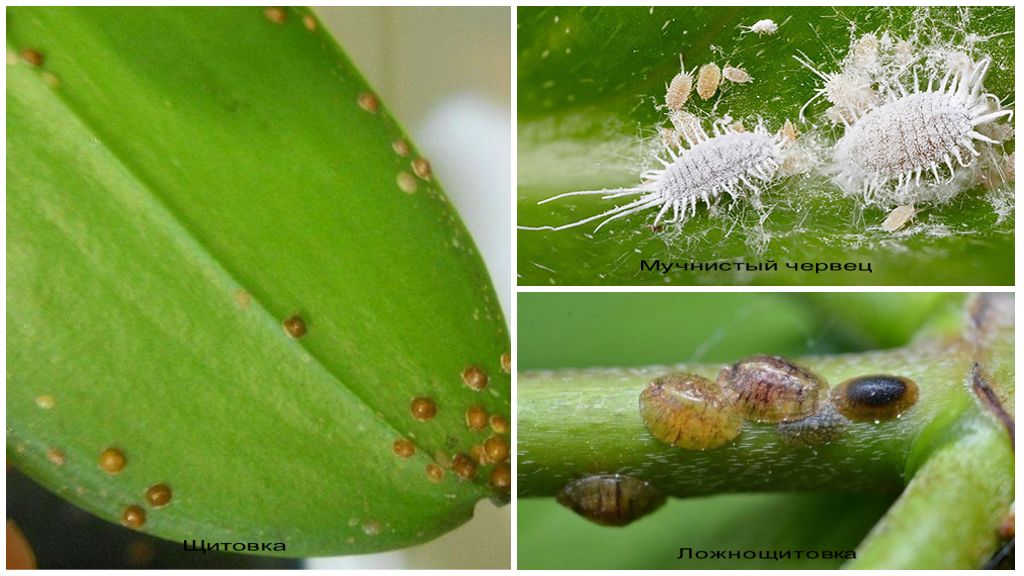
Mealybug
These pests are the most dangerous for flowers. Most flower growers panic if white furry bugs appear on the orchid. Because of them, the leaf plates quickly turn yellow and begin to fall away from the stems. If you do not catch on time, then save the orchid will not work.
Worms look like small white insects on orchids, similar to fluffy lumps. With an increase, it becomes noticeable that their body has an elongated shape and has antennae. The main nutrition of bugs is juice from plants.
Important!
The main reason for the appearance mealybugs is poor care for the orchid, which is why it weakens, as well as overfeeding with nitrogen fertilizers.
Signs and information about worms:
- pests settle in the roots, at the base of the flower, under fresh leaves and among the fallen, are introduced into the leaf sinuses;
- the white fluffy insect is covered with a coating similar to powdery powder, which gave the name to this parasite;
- colonies of bugs make deposits that look like white cotton wool or cobwebs;
- female eggs are placed on the underside of leaf plates, and adult individuals often live in the same place.
How to get rid of white shaggy bugs - treatment:
- clean the basal space of the flower, that is, remove fallen leaves and dried pseudobulbs;
- make spraying of the lower parts of the flower and the soil of Fitoverm preparations with an interval of 7-10 days 2 times;
- twice a day to inspect the orchid and pull out the worms with a thin toothpick, then this place should be wiped with a swab dipped in soapy water;
- regularly inspect the flower and wipe its leaf plates, carefully monitor the condition of the soil in the pot, remove dried parts from it.
On a note!
An orchid can be considered recovered only when, within 4 weeks after all treatments, the pests themselves and their oviposition are absent.
Root worm
In addition to the mealybug, among the soil and aerial roots of orchids, you can find its root appearance. The bugs differ in color: light gray, yellowish, less often - pinkish small insects. Such worms damage the root system of the flower, settling in the soil with good aeration.
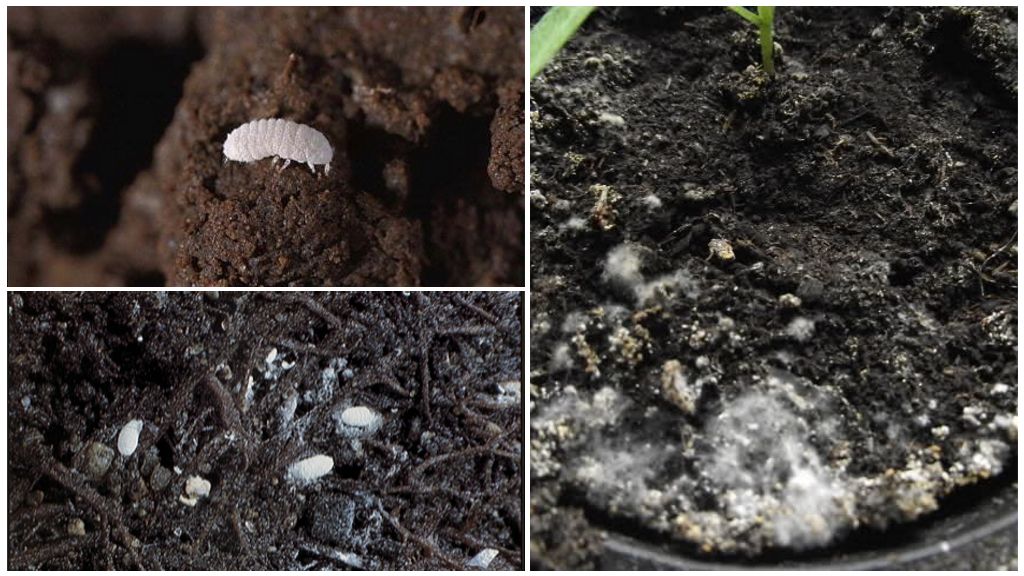
On a note!
Finding yellow or white bugs in the soil of orchids is always difficult if the pot is opaque. Its appearance is signaled by a deterioration in the appearance of the plant when it begins to wither sharply.
To get rid of pests, the following actions will help:
- shake the orchid out of the container, rinse the roots well;
- make disinfection with a weak solution of potassium permanganate;
- discard the old soil, and heat the pot thermally (boil);
- some flower growers apply the falling of a dry insecticide into the infected soil, then after watering the orchid will absorb the resulting toxic solution, which will cause the parasites to die.
Aphid
Miss the appearance of aphids on an orchid very difficult, becausesuch pests settle in large colonies. Outwardly, the aphid looks like the smallest green or black bug. They settle mainly on young leaves, flowers and sprouts, sucking out juice from them and simultaneously injecting a toxic substance that can destroy plant cells.
Important!
The affected flower has deformed sheets with a sticky coating. The danger of aphids lies in its ability to transmit various types of fungi and viral diseases. These small bugs appear if the orchid does not have enough watering and the humidity is low.
Aphid control methods:
- with a small number of beetles, bathing the entire plant in clean warm water helps;
- with mass accumulations, the orchid is first treated with a soap solution or foam from laundry soap (1 tbsp. l. diluted in 1 l of liquid);
- then it should be sprayed with Fitoverm or a solution of Chlorophos 3%.
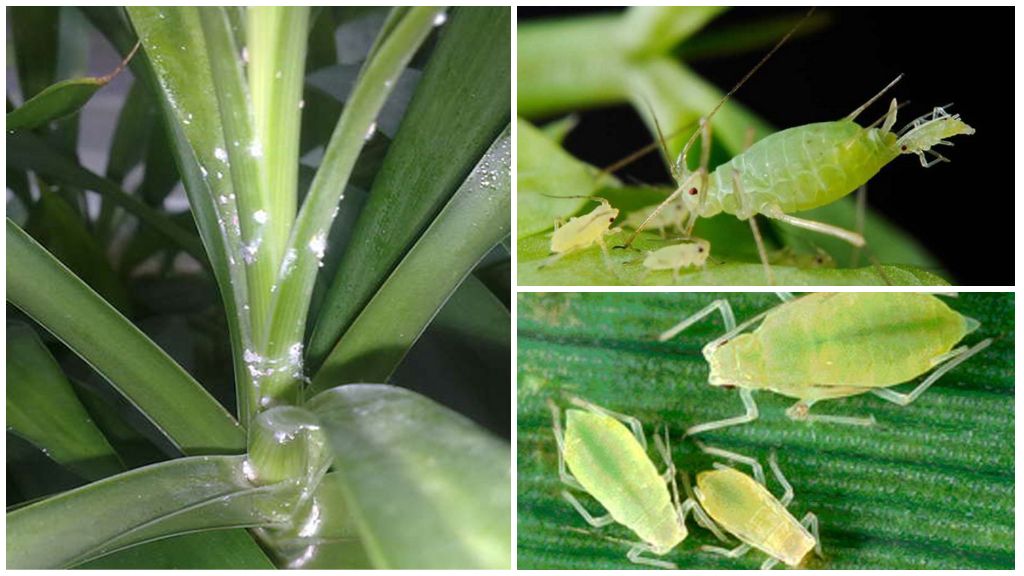
Ticks
These pests are dangerous due to their smallest size, so they are very difficult to detect.
There are several types of ticks:
- bulbous (root) - look like small white bugs, which can only be viewed with a magnifying glass, they penetrate the roots of the orchid and suck out the juice, because of which the roots become threadlike with a void inside, sometimes settle in the base of the leaves, often they are accompanied by fungal diseases;
- red spider mite - traces of his stay look like a white web, then the lower parts of the leaves become covered with yellow spots and begin to dry out, the plant gradually withers and can drop buds;
- the false spider mite or flat-body (adult and larvae) has a yellow or red color, the affected part of the leaves is covered with a silver-white bloom on the orchid, then they turn brown and fall, like the buds.
For treatment, the following actions are performed:
- spraying with Fitoverm (3-4 treatments every 4 days, temperature + 30 ° C of all parts of the plant, spilling with an insecticidal soil solution;
- transfer the orchid to a warm room with high humidity, do frequent spraying, pour water into the pan.
Whitefly
Pests are small white butterflies that can quickly fly and hide among any parts of the plant, even in the bark. When you touch the orchid or soil with your hand, butterflies fly up quickly. They prefer to sit on dense leathery leaves. Oviposition is placed under the bark, the lower edges of the leaf plates. White and yellow larvae hatch from them, which, like butterflies, feed on plant sap.
White-yellow stains remain on the leaf plates from the actions of the pest, and sweet nectar remains in the bite areas. Whitefly control consists in hanging sticky flypapers for flies in the room. Damaged orchids should be washed with a soap solution in a ratio of 1: 6, you can wipe all the green parts with a soapy sponge.
The flower itself and the soil beneath it must be sprayed with Actellik, then repeat the treatment after 7-8 days. For prevention, it is recommended to increase air humidity, regularly wipe the leaves (every 5 days), spill the soil with a stream of water every month.
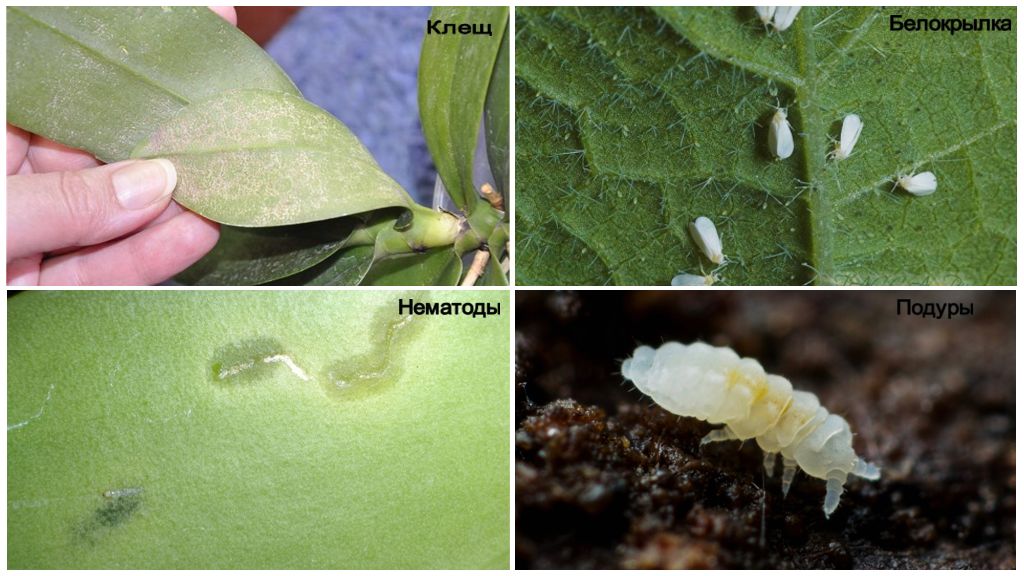
Nematodes
These pests are small (up to 2 mm long) roundworms that penetrate the leaves of an orchid and feed on its juice, sucking out all the nutrients. The plant becomes ill due to malnutrition and poisoning by nematodes.
Varieties of pests indicate the place of introduction of the pest: root, leaf and stem. The cause of their penetration may be contaminated water, soil or neighboring flowers.
Fools
Gossips or podura are gray-white or light brown little bugs that can quickly move and even jump on the ground in a pot. In their speed and habits, they look like fleas.
Notice that on the orchid there are tails, it is easiest to immediately after watering, because they love moist soil with moss.Orchids pose a danger to bugs for young roots; therefore, their destruction should be carried out as soon as possible.
Popular methods of saving from bugs
To destroy many pests, folk recipes also help:
- spraying twice a day with a water-oil solution (2 tbsp. l. olive oil in 2 l of water);
- prepare the infusion of garlic (4-5 cloves per 500 ml of boiling water), put for 4 hours, then wipe all the green parts of the orchid with a decoction;
- soap-alcohol solution for wiping is prepared from 15 ml of alcohol, 1 tbsp. l grated laundry soap per 1 liter of standing water;
- tincture of orange peels (50 g per 1 liter of boiling water), set aside for a day, then spray all parts of the flower.
The listed pests can attack orchids at any time of the year. Methods of dealing with them and active measures will help to positively solve the issue of amateur gardeners about what to do if white bugs are wound up in orchids. To save your beloved and such beautiful flowers is possible only with the exact identification of pests. This will help to take the right fighting methods to save orchids.
